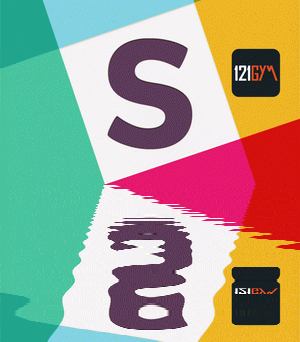Creating flow for your startup with Slack
I have a full time career but the entrepreneurial bug is in me and I embrace it fully. My outlet for this is active involvement in…

I have a full time career but the entrepreneurial bug is in me and I embrace it fully. My outlet for this is active involvement in accelerator programs, mentoring, startup office hours, panel discussions and general support of the ecosystem. Fortunately, my day job revolves around technology enabled innovation, so I’m never too far from my passion.
The other outlet I have is a hobby project called 121Gym. I’ve long been obsessed with solving the last mile problem in the gym. How do you capture the activity the person is doing as close to real time as possible without retro-fitting every gym in the world or intruding on their workout and breaking their focus. My first startup, Exertrack, was my attempt to solve this. We didn’t.
121Gym is a great personal example of how I use Slack to create flow on a project.
To get to this point we have had to work with teams in India and Bulgaria, accommodate work schedules and commitments and manage multiple incoming and outgoing communications channels and tools.
Enter Slack! I cannot gush enough about how Slack enabled this whole process.
It took only a few days to turn this list of tools into one stream of manageable, actionable information:
- Pivotal Tracker
- Amazon Web Services
- BitBucket
- Mailchimp
- Social Feeds
- Notify.io
- Google Analytics
- SupportKit
- UpWork
- User Management Notifications from the app
- Freelancers via SpeedLancer’s excellent ShidoBot Slack integration
With Slack I no longer have to rush off in 20 different directions to find information and hold it in my head to understand whats going on with the Pebble App, Android App and Apple App. It all comes to me. Using the built-in integrations and augmenting these with Zapier and IFTTT, I constantly have the 121Gym business ‘flowing’ over me.
This is especially useful with the offshore teams as timezones now evaporate as we can all take action on what is relevant to us as we need to.
We have a few simple rules to make this work:
- If you’re tagged in an update, respond as soon as you’re online.
- ALL written communications happen through Slack. No email, no texting. Only voice happens over Skype once a week.
- All files live in Slack so we’re not hunting in multiple places for them. Dropbox and Google Spreadsheets are ok, but the link must be in slack.
- All planning and sequencing activities live in Pivotal Tracker. This includes comments and updates related to stories.
- User support lives in Slack via SupportKit.
The result is that we can find everything by searching Slack and hardly use email or external systems at all. It’s surprising how seldom we have to go to the source system to do anything.
I’m interested to see SAAP (Slack-As-A-Platform) evolve as more and more integrations and clever tools are created (SupportKit and ShidoBot being great examples). Slack is growing rapidly and the reason is obvious — any product that removes steps or friction and creates less cognitive load on the user wins.
How do you use Slack in clever ways? Let me know in the comments below as I’d love to learn more from you.
☞ Please tap or click “♥︎” to recommend this article to others.
